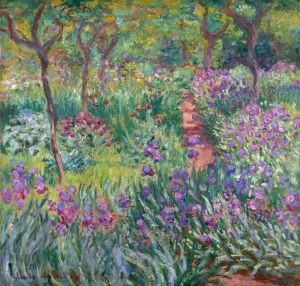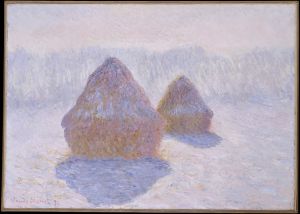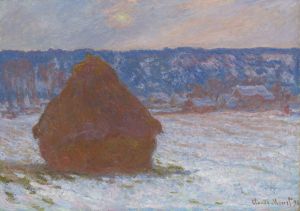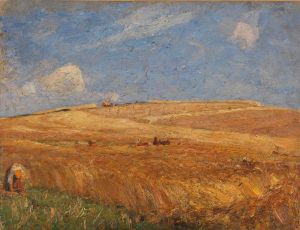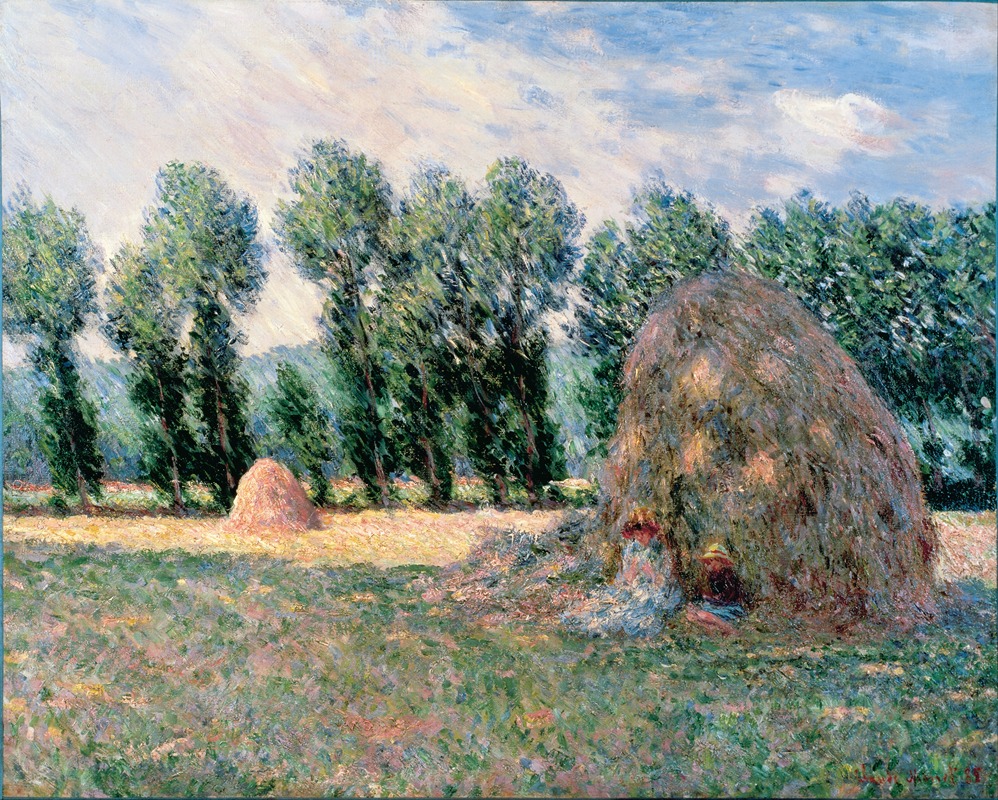
Haystacks
A hand-painted replica of Claude Monet’s masterpiece Haystacks, meticulously crafted by professional artists to capture the true essence of the original. Each piece is created with museum-quality canvas and rare mineral pigments, carefully painted by experienced artists with delicate brushstrokes and rich, layered colors to perfectly recreate the texture of the original artwork. Unlike machine-printed reproductions, this hand-painted version brings the painting to life, infused with the artist’s emotions and skill in every stroke. Whether for personal collection or home decoration, it instantly elevates the artistic atmosphere of any space.
"Haystacks" is a series of impressionist paintings by the renowned French artist Claude Monet. Created between 1890 and 1891, these paintings are celebrated for their innovative use of light and color, capturing the same subject under varying conditions of light, weather, and seasons. Monet's "Haystacks" series is a quintessential example of his dedication to capturing the transient effects of natural light.
The series consists of around 25 paintings, all depicting stacks of harvested wheat, barley, or oats in the fields near Monet's home in Giverny, France. Monet was fascinated by the way light and atmosphere could transform the appearance of these mundane objects. He painted the haystacks at different times of the day, in different seasons, and under various weather conditions to explore these changes.
Monet's approach to the "Haystacks" series was methodical and systematic. He would often work on multiple canvases simultaneously, switching between them as the light and weather changed. This allowed him to capture the precise momentary effects of light and color. The paintings in the series are characterized by their vibrant hues and dynamic brushstrokes, which convey the shifting light and atmospheric conditions.
The "Haystacks" series is notable for its exploration of the effects of light and color, which was a central concern of the Impressionist movement. Monet's use of color is particularly striking; he employed a wide range of hues to depict the changing light, from the warm, golden tones of sunset to the cool, bluish shades of early morning. This use of color not only captures the visual appearance of the haystacks but also evokes the sensory experience of being in the landscape.
Monet's "Haystacks" series was first exhibited in 1891 and received critical acclaim. The paintings were praised for their innovative approach to capturing light and atmosphere, and they helped to establish Monet as a leading figure in the Impressionist movement. The series also had a significant impact on the development of modern art, influencing later artists who sought to capture the effects of light and color in their work.
Today, the "Haystacks" series is considered one of Monet's masterpieces and a landmark in the history of art. Individual paintings from the series are held in major museums and private collections around the world, including the Musée d'Orsay in Paris, the Art Institute of Chicago, and the Metropolitan Museum of Art in New York. The series continues to be celebrated for its beauty and its groundbreaking exploration of light and color.
In summary, Claude Monet's "Haystacks" series is a pivotal work in the history of Impressionism and modern art. Through his meticulous study of light and color, Monet transformed a simple agricultural subject into a profound exploration of the natural world, capturing the ephemeral beauty of the changing seasons and the passage of time.








